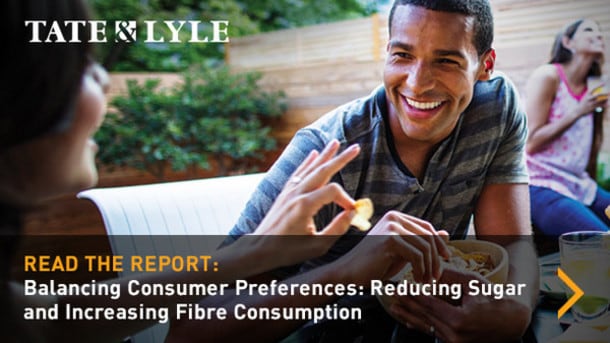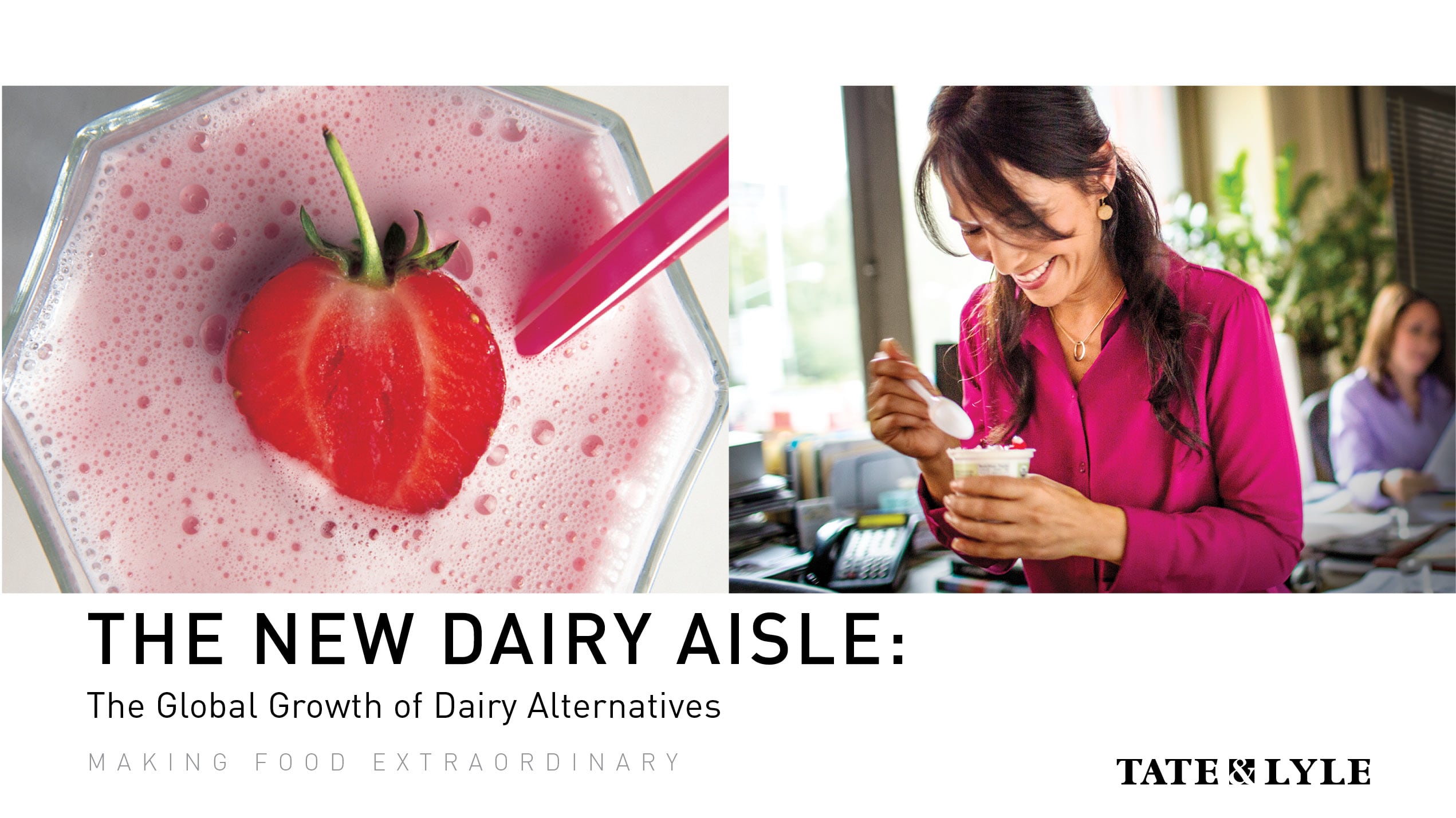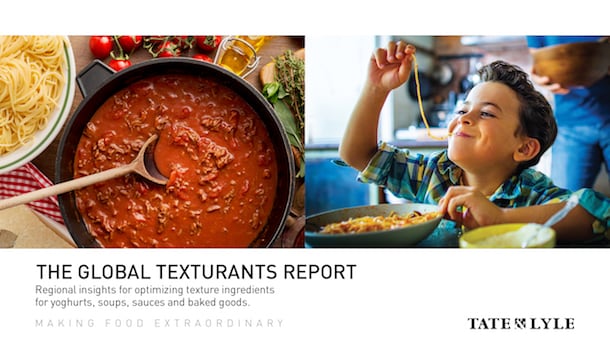What does mouthfeel mean? It’s well known that taste is a big reason why we gravitate toward certain foods or drinks.
But what makes something taste good? Beyond flavour, it’s mouthfeel that plays a starring role. Mouthfeel is the texture and sensations you experience when consuming food and beverages. This includes how food looks, tastes, sounds and literally feels in your mouth.
It is one key reason we either accept, or reject, what we eat. Simply put, mouthfeel alongside flavour creates the full experience of eating. It’s essential. This series of articles will unpack this in detail, dive deep into some case studies, and highlight the opportunities that are waiting for brands to seize.
Navigating change
Let’s set the scene. We all know the world is changing quickly. New challenges are emerging constantly. From the impact climate change has on agriculture and affordability through to the repercussions of government policy and international tariffs – brands not only need to think ahead, they need to work with partners who can deliver for them against this complicated backdrop. And this includes the evolving landscape of consumer trends.
Conscious consumers
Fitness influencers. Wellness trends. GymTok. It should come as no surprise that the consumer demand for healthier products is only increasing – and this can be seen in the preference for products with ‘clean’ labels. In fact, over two thirds of global consumers say they pay attention to the ingredients in their food and drink.¹
This attitude is particularly prevalent amongst Millennial and Gen Z consumers – who are going to have buying power for years to come. And something as seemingly simple as cleaning up labels to appeal to this audience perfectly captures why you can’t afford to overlook mouthfeel.
Clean labels, messy definitions
There isn’t a universal definition of what actually constitutes a ‘clean’ label. Different demographics have different ideas. So, how do we overcome this barrier? By spotting key themes across groups, and working towards those as objectives.
Research by Tate & Lyle indicates that 60% of consumers would see natural ingredients as indicating a clean label, and a huge 72% would only consider clean label as something with no artificial ingredients or additives.
The solution, then, is ingredients that consumers perceive as ‘natural’, with non-artificial names. But only using easily recognised, common and whole ingredients isn’t a great option. Higher costs and unstable supply chains make this unviable for manufacturers at scale. It needs something more bespoke.
Enter the experts. Food scientists, like the team at Tate & Lyle, are able to create solutions containing ingredients that work for you – achieving business goals whilst satisfying consumers.
And this is where mouthfeel comes in. Because it doesn’t matter how short the list of ingredients is and what you name them – if something doesn’t taste or feel right to a consumer, they won’t choose it. And, as mentioned: mouthfeel is the key reason we either accept, or reject, what we eat.
Mastering mouthfeel with clean labels
The challenge is this: can we make healthier products, with clean labels, that have the right mouthfeel? The answer is yes.
You might doubt this. Anyone who’s had a chalky protein bar knows that good nutrition doesn’t mean good to eat. That’s exactly why Tate & Lyle has invested so much time into mastering it, built such a vast portfolio – and acquired CP Kelco. The more solutions, ingredients and experts Tate & Lyle has at its disposal, the more ways it has to create formulations that meet any challenge.
Plant powered cream cheese
A thick and velvety smear of cream cheese is one of life’s great pleasures. But there are limited options if you’re a vegan. Surely we can’t recreate that texture and taste without dairy?
Adopting plant-based lifestyles and diets is one of the ways many consumers are changing their habits in the pursuit of health. However, plant-based alternatives of their old favourites come with labels full of unknown and off-putting ingredients – and frequently a mouthfeel that’s simply not quite right.
This was the exact problem one of Tate & Lyle’s customers raised. How can we clean up the label, while delivering creamy mouthfeel – and keeping it affordable? Tate & Lyle’s expert team, enhanced with the addition of CP Kelco, did it easily.
In fact we completely replaced the market standard with a new solution, at no extra cost. Its food scientists have an unparalleled knowledge of the structure-function of different ingredients and their applications – which means, drawing on its portfolio, they were able to replicate the emulsification and viscosity properties that traditional stabilisers add to cream cheese.
Texture, sorted.
This was coupled with a specialism in rheology – the study of flow behaviour. The team analysed how to best mimic the texture and sensation of real dairy products. By defining quantitative metrics to judge this against, it guided the choices the team made and removed ambiguity around results.
Drivers of mouthfeel, mapped.
By leveraging the ability to conduct extensive testing and research, clear preferences were established, making sure the solution would truly work for consumers’ tastebuds.
The full sensory experience, perfected.
So what was that solution? Well, the industry approach was to use a blend of several stabilisers which are listed as E numbers on the label. By removing them and replacing with a single plant-based clean label ingredient, Tate & Lyle created NUTRAVA Citrus Fiber.
This was actually the first upcycled citrus fibre of any kind on the market – made using leftover citrus peels, the byproduct of juice production. And it performs a groundbreaking dual function by both stabilising the emulsion and creating that perfect creamy texture.
Plus three ingredients were reduced to one – which could be listed on labels as ‘citrus fibre’. Allowing the product to be perceived as ‘natural’ and appealing.
No extra cost to the client, and a massive win at shelf.
Light yoghurt is (not actually) light work
Can something feel decadent while being healthy? Because this is why consumers love yoghurt as a better choice at breakfast. It feels like an indulgent treat while still being light. Or at least that’s what they want it to feel like. Actually achieving that? A challenge. But it’s one Tate & Lyle was able to overcome.
Tate & Lyle’s client wanted gelatine removed from their yoghurt, while cleaning up the label. Knowing an ingredient with a creamy texture, and high moulding abilities, would be needed, the unique Tate & Lyle Sensation™ tool was used. This is a formulation tool that translates consumer insights into sensory language and delivers the best ingredient solutions.
We know that food’s sensory attributes change based on the behaviour of starches. Their swelling volume, composition and processing conditions all come into play. But this can all feel very technical and confusing.
Tate & Lyle Sensation™ maps this understanding onto desired outcomes. The kind of mouthfeel we want, the category we are catering for and geographic demand. This means it not only provides clarity – it can speed up processes. By being more accurate, products can get to market at high speeds.
In this case CLARIA® Bliss and CLARIA EVERLAST® starches were combined to get the exact behaviour wanted from the yoghurt, while also providing better stability on shelf. Both of these are derived from tapioca, and can be listed as tapioca starch or simply starch on labels. The result was a superior product with a clear point of differentiation and a clean label, that went to market fast – increasing the commercial success for the client.
Once again: a mastery of mouthfeel made the difference.
Healthier choices with great mouthfeel
The question isn’t whether mouthfeel matters, your customers have already answered that. The real question is: are you ready to master it? Consumers want to make healthier choices – and they want those choices to taste and feel amazing.
There’s no debate. Clean labels. Great mouthfeel. If you can provide products that offer both, you’ll win every time. And if you don’t, the competition will. So what should you do now?
Balancing taste, texture, cost and cleanness is a feat of science. It requires working with seasoned experts with access to a broad portfolio of ingredients and the ability to develop and test bespoke solutions. Which is exactly what Tate & Lyle can provide.
And with its deep science capabilities, Tate & Lyle is constantly innovating – discovering a new approach and finding tomorrow’s solutions today.
Partner with Tate & Lyle’s expert team to develop truly innovative, exciting, and novel mouthfeel experiences that will make your brand stand out on shelf, and in the memories of consumers, for years to come.
Mouthfeel matters. Don’t miss out.
References
- GlobalData. Clean Label in Consumer Goods. April 2023.
*Disclaimer: The applicability of label claims, health claims and the regulatory and intellectual property status of our ingredients varies by jurisdiction. You should obtain your own advice regarding all legal and regulatory aspects of our ingredients and their usage in your own products to determine suitability for their particular purposes, claims, freedom to operate, labelling or specific applications in any particular jurisdiction.








